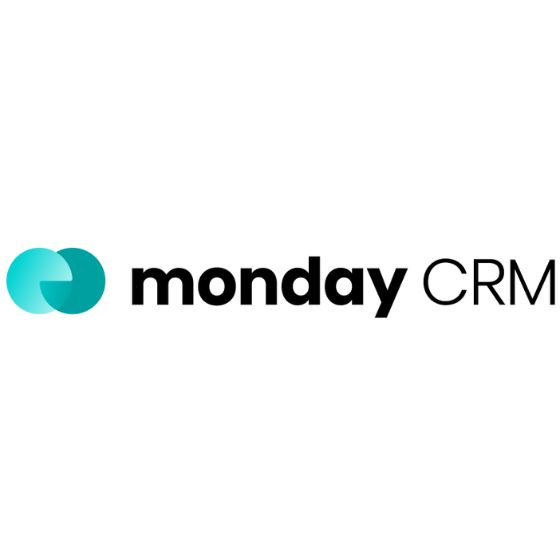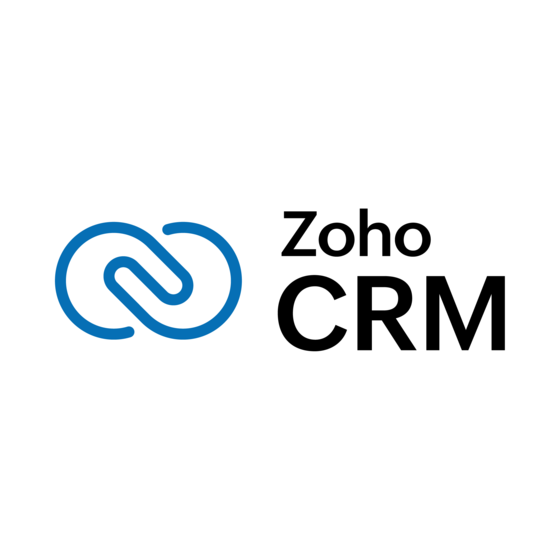Lead Overload: Not Enough!: Generating leads is only one part of the equation; a successful business also needs a robust lead management strategy to convert customers.
Understand Lead Management: Lead management involves organizing and tracking leads with a modern, personalized approach that integrates both sales and marketing.
Master Lead Management Steps: The process includes lead capture, enrichment, tracking, qualification, distribution, and nurturing, each adding critical value to properly handling leads.
Automate to Succeed: Automate lead capture using a CRM-integrated system to ditch manual entries, enhancing speed and accuracy in lead tracking and management.
Data Enrichment: Know Your Leads: Enrich leads with publicly available information and track their activities like site visits to better understand their buying behavior and anticipate their needs.
You might have a flood of leads consistently coming in for your sales team to pursue, but generating leads isn’t the whole story for a successful, thriving business. If you don’t have a lead management strategy, it’s time to get on track with an organized, accessible, standardized process.
You may not be sure where to start, but I’m here to guide you through the process—explaining lead management, its benefits, and its challenges. Follow along as I take you on a journey that will transform your lead management and boost your revenue.
The Anatomy Of Lead Management
To begin, let’s take a deep dive into the anatomy of lead management. What is lead management? Is there a standardized process? How do you develop a strategy that’s ideal for your organization? Let’s find out below:
What is Lead Management?
Lead management is the process of organizing and tracking your leads.
Traditionally, the process of lead management has you treating all your leads equally, reaching out to each of them at the same intervals, through the same channels, with the same offers. However, that approach is starting to get outdated. A modern lead management strategy has a lot more to do with a personalized, tailored approach that integrates sales and marketing.
Today’s lead management captures new leads, tracks their activities, and keeps an eye on their behavior until it’s time to engage with them. Lead qualification and lead nurture campaigns all fall under the more modern lead management umbrella.
The Lead Management Process
The lead management process has several key steps, including lead capture, lead enrichment and tracking, lead qualification, lead distribution, and lead nurturing. Let’s take a brief look at what each of these steps entails.
1. Lead Capture
There are many ways to generate leads, including paid ads, trade shows, social media, email outreach, and extensions that scrape website visitor data. If you already have a CRM or lead management software, your digital tools will add contact information and source details so you capture every lead that comes your way and track where it came from to see which campaigns are working best.
If you’re still entering new leads manually, it’s time to let go of those spreadsheets and get a lead management system that integrates with your CRM for faster, more accurate lead capture.
2. Lead Enrichment
Once you’ve got a lead in your sales cycle, it’s time to enrich it with all the publicly available information you can, including details like their company name, social media accounts, and job title. You’re saving your sales team time on research and manual data entry while getting a better picture of each lead’s buying signals.
You should also be tracking what your leads are doing when they visit your site or social media accounts, with heat maps and replays that show you where people are spending the most time. With this information, you’ll be able to anticipate their needs and craft personalized content.
3. Lead Qualification
Whether you use predictive scoring, a custom scoring method, or lead scoring software, you should have some sort of process for ranking leads and determining their readiness to buy your product. Lead qualification will also tell you where a lead is in the buying cycle and organize them in order of priority so your sales reps can invest their time more efficiently.
4. Lead Distribution
With a smaller business, you know your sales reps so well that manually assigning leads is simple. You pair the best rep for each lead to ensure the best possible outcome. However, larger organizations need to be able to scale, so lead management software that distributes leads for you is essential.
Novocall research shows that responding to leads within five minutes improves their odds of responding by 400%. So how do you get your sales reps the information they need to get in touch with leads right away? An automated lead distribution system run by your lead management software. Set the rules for round-robin, territory, or skills-based assignments, and the system does the rest.
5. Lead Nurturing
In a perfect world, every lead would convert into a customer. Sadly, not all leads are sales-ready so you want to put them on the backburner—but not forget about them. With a long-term lead nurturing campaign, you can still convert leads who weren’t ready to buy when they first came your way.
Key Components Of Lead Management

Setting your system up for success means following lead management best practices. Once you design and implement your system, make sure you’re incorporating some of these recommendations to enhance and optimize the entire workflow.
1. Automating Inbound Lead Qualification
Without a framework in place, lead qualification takes a ton of time. Use your CRM software along with other digital tools to automate lead qualificaiton. You identify the qualities that make up an SQL (sales-qualified lead), and your system organizes and segments leads before handing them off to your sales team.
2. Responding to SQLs Quickly
I already mentioned above that responding to a lead within five minutes majorly improves their response time and engagement. Don’t leave your SQLs waiting. If responding within five minutes isn’t feasible, let the 24-hour rule guide you to maintain your momentum and continue driving leads through the sales cycle.
3. Reducing Time to Value
You don’t want a lead to leave just because you haven’t given them something of value right away. Demonstrate you have something to offer and provide them with useful content that resolves a problem while incentivizing participation in gated content, like newsletters.
4. Prioritizing Lead Nurturing
Even if your sales team didn’t close the deal, you should still identify new opportunities to re-engage with old leads or leads that have gone cold. Whether their priorities have changed or they now have the budget to afford your product, you want to be at the top of their mind.
5. Measuring Your Efforts
There are always some campaigns and strategies that are more effective than others. When you actively track and monitor campaigns, you can increase visibility into your marketing and sales efforts — ensuring you’re spending resources in the appropriate place. Regular monitoring also ensures you spot trends and changes in the market and are able to adjust accordingly.
Why Is Lead Management Important?
As the backbone of the sales process, collecting qualified leads that align with target personas and appropriately segmenting them is the best way to drive potential customers through the lead lifecycle. This is an active and continuous process that requires quick follow-ups, appropriate lead assignments, and evolving marketing strategies.
Benefits Of Lead Management
But effective lead management does more than just streamline the sales funnel and improve conversion rates. Lead management tools can also improve your sales funnel by:
- Aligning salespeople and marketing teams to ensure accessibility and up-to-date information on one management platform.
- Enhancing the customer experience by providing sales leads with relevant information through email marketing, webinars, and other touchpoints. In fact, 59% of customers prefer a tailor-made experience.
- Ensuring a more efficient use of resources because you understand which are the right leads to pursue based on demographics, lead data, and buying signals.
- Increasing profit through data-driven decisions that use crucial lead information to qualify leads, address pain points, and create deeper connections.
- Improving lead quality through a robust scoring process that you can automate based on your preferred buyer persona and company goals.
- Enhancing scalability with automated optimizations as your number of leads grows is simple with a management system.
According to Altman Vilandrie & Company, only 15% of companies are taking full advantage of lead generation and management tools. And HubSpot says that 65% of small businesses struggle with managing their leads. If you want to stay ahead of the competition, it seems clear that integrating lead intelligence software into your workflow can provide a big boost.
Lead Management Tools
From CRMs to lead gen, capture, scoring, and other software, there can be a lot of tech involved in lead management (and a lot of lead management software costs). But it doesn't need to be complicated. These are a few of my favorite tools for managing leads through the entire funnel:
| Tool | Best For | Trial Info | Price | ||
|---|---|---|---|---|---|
| 1 | Pipedrive CRM Track leads through every part of the sales funnel with Pipedrive. | Best for visual sales pipeline management | 14-day free trial | From $14/user/month (billed annually) | Website |
| 2 | monday CRM Monday.com CRM optimizes sales workflows for improved efficiency and productivity. | Best for customizable sales automation | 14-day free trial | From $12/user/month (billed annually, min. 3 seats) | Website |
| 3 | Zoho CRM Zoho CRM provides a centralized dashboard for all sales insights, including deals and leads. | Best for AI-driven sales insights | 15-day free trial | From $14/user/month (billed annually) | Website |
| 4 | CallPage Get free 28-second calls directly from your customers with Callpage. | Best for outbound lead management | 7-day free trial available | From $25/month | Website |
| 5 | Drift Discuss directly with your prospects with Drift. | Best for conversational marketing | Free demo available | From $2,500/month (billed annually) | Website |
| 6 | Unbounce Create interactive landing pages with Unbounce. | Best for creating personalized landing pages | 14-day free trial | From $90/month (billed annually) | Website |
| 7 | Kustomer Profile and engage customers with Kustomer. | Best for omnichannel customer support | 14-day free trial | From $89/user/month | Website |
| 8 | Zendesk Sell View leads, contacts, and interactions with Zendesk Sell. | Best for lead qualification | Free trial + free demo | From $19/user/month | Website |
| 9 | Keap Keap's sales automation feature automates sales processes, including follow-ups and task assignments, to help manage the sales pipeline. | Best for small businesses | 14-day free trial | From $249/user/month (billed annually) | Website |
| 10 | AeroLeads Build comprehensive email lists with Aeroleads. | Best for building email lists | Free trial available | From $39/month | Website |
Challenges In Lead Management

Even with an outline that helps guide your lead management strategy, there are still hurdles and pitfalls that may slow your process, interrupting marketing campaigns and reducing lead conversion.
Talent Acquisition and Development
Who you have on your team is a big part of lead management. Whether your sales team has a few bad habits or they’re just doing this job to pay the bills, you might need to take a good look to ensure they’re performing at their peak. Some bad habits and personality traits that may derail lead and customer retention include:
- Reaching out to leads too early in the day
- Overstepping their boundaries with prospects
- Revealing how much research they did on their leads
- Sounding too eager or desperate for a sale
- Acting like they know it all
When it comes to talent acquisition with the right personality for sales, you should be looking for team members with attributes that drive them toward success, including an individual passion for helping customers, relentless attention to detail, constant desire to improve, and intense need to close deals through expertise and honesty.
You won’t always be able to find experienced sales leaders right away, but nurturing the above traits throughout the onboarding process can help. You’ll also want to support skill development for each individual through continuous training and personalized coaching.
Cross-Functional Alignment
Because sales and marketing team tasks are merging, there will be some confusion over responsibilities — opening the door for lead and customer relationship management to slip through the cracks.
The best way to mitigate the potential damage here is by clearly defining cross-functional dependencies and establishing open communication channels. Some questions to explore about this type of merge include:
- During which stage of the sales cycle does your sales operations team rely on the marketing and vice versa?
- Which integrations hold information for both teams and how well trained are they on using them?
- When should your sales and marketing teams be communicating about leads?
- Do you have communication channels that make sharing ideas, metrics, and quality lead stats simple?
Navigating Market Disruptions
While you have hands-on opportunities to manage most of your sales process and workflows, there are always a few things that are outside the scope of your control, like unpredictable customer behavior and market disruptions.
When dealing with uncertainty in your industry, you can mitigate disruption within your own organization with a few tools and strategies, including
- Sales forecasting that can identify new trends and changes to the market, identify issues with your sales processes, and prepare you for making data-driven decisions when negative outcomes affect your business.
- Embrace the discomfort of uncertainty. According to Harvard Business Review, this is the top strategy for leading through disruption, as acknowledging that you don’t know everything allows you to shift your mindset from knowing it all to learning it all.
- Rigorously and frequently test all your assumptions. Whether you’re seeing the early signals of market disruption or conducting a regular review of your processes, prioritize facts and data over your biases.
- Focus on agility while staying true to your company’s purpose. When everyone in your organization is on the same page, you’re working toward a unifying purpose instead of prioritizing disparate things that seem appropriate for your role. With specific guidelines, you can trust your teams with more freedom to react to the changes they’re seeing in the market quickly and effectively.
Key Takeways
So I’ve covered a ton of information here on lead management, various strategies you can employ for your processes, and how to address the various hurdles that may come your way. But overall, automation and standardization of your processes is the most efficient way to improve while opening up opportunities for growth.
Need Help Finding Software?
Fill out this form to be matched with an advisor who can help you find the right lead management software for your business.












